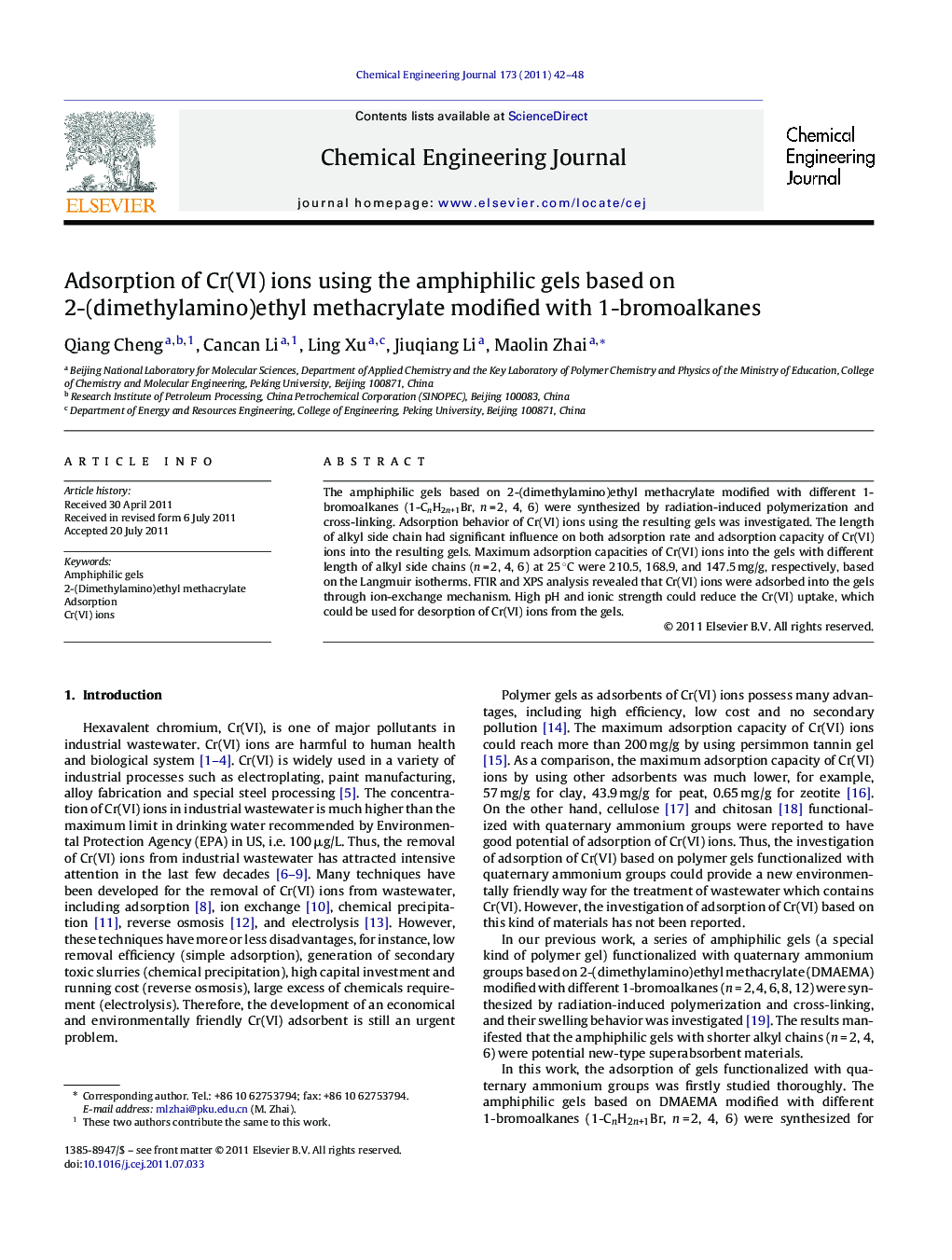| Article ID | Journal | Published Year | Pages | File Type |
|---|---|---|---|---|
| 150634 | Chemical Engineering Journal | 2011 | 7 Pages |
The amphiphilic gels based on 2-(dimethylamino)ethyl methacrylate modified with different 1-bromoalkanes (1-CnH2n+1Br, n = 2, 4, 6) were synthesized by radiation-induced polymerization and cross-linking. Adsorption behavior of Cr(VI) ions using the resulting gels was investigated. The length of alkyl side chain had significant influence on both adsorption rate and adsorption capacity of Cr(VI) ions into the resulting gels. Maximum adsorption capacities of Cr(VI) ions into the gels with different length of alkyl side chains (n = 2, 4, 6) at 25 °C were 210.5, 168.9, and 147.5 mg/g, respectively, based on the Langmuir isotherms. FTIR and XPS analysis revealed that Cr(VI) ions were adsorbed into the gels through ion-exchange mechanism. High pH and ionic strength could reduce the Cr(VI) uptake, which could be used for desorption of Cr(VI) ions from the gels.
► The amphiphilic gels based on 2-(dimethylamino)ethyl methacrylate modified with different 1-bromoalkanes were synthesized. ► The length of alkyl side chain had significant influence on both adsorption rate and adsorption capacity of Cr(VI) ions. ► Based on the Langmuir isotherms, maximum adsorption capacities are relatively high compared with other Cr(VI) adsorbents. ► The pH and ionic strength can affect the adsorption behavior of Cr(VI) ions, which could be useful on desorption. ► FTIR and XPS analyses indicated that Cr(VI) ions were adsorbed into the gels through ion-exchange mechanism.
